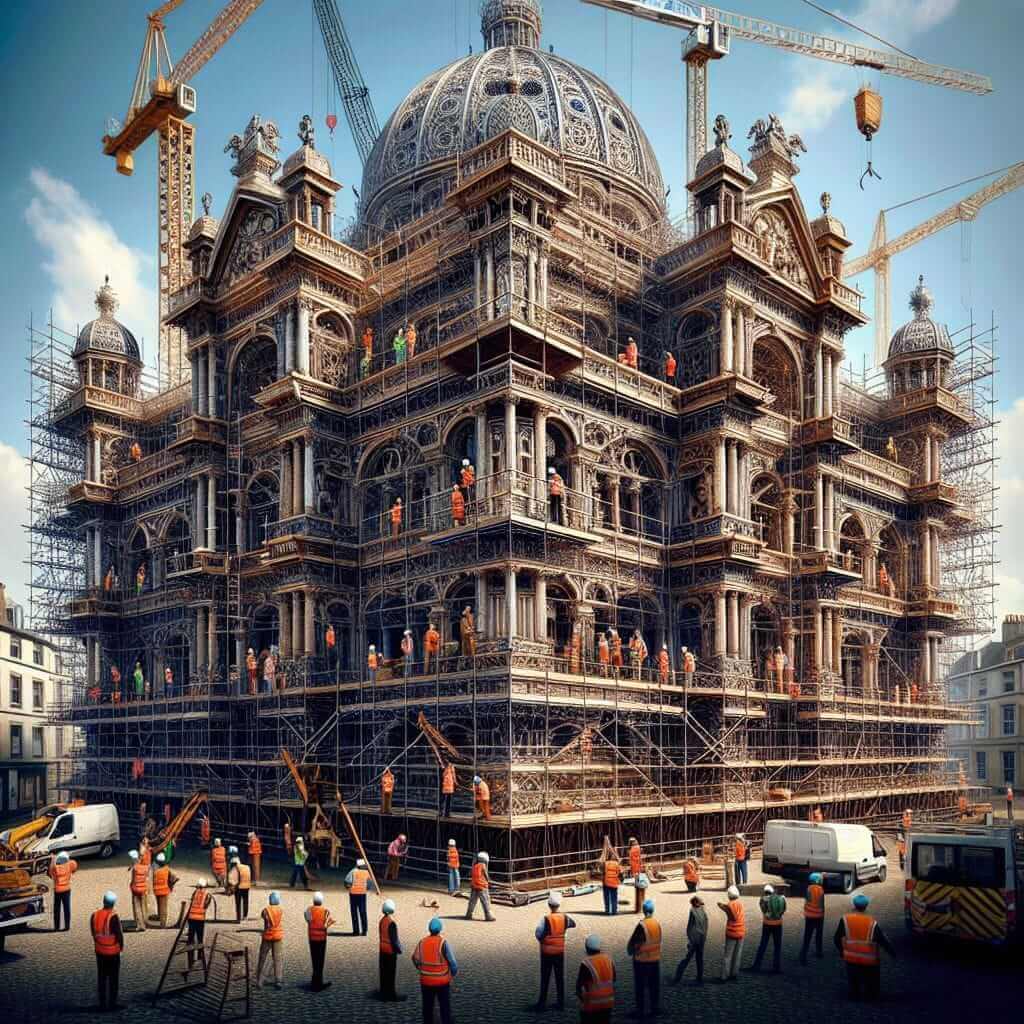The Reading section of the IELTS exam is designed to assess a variety of reading skills, such as understanding arguments, recognizing writers’ opinions and purposes, and identifying main ideas and details. A frequent theme in past exams has been the preservation of cultural heritage sites. The relevance and importance of this topic make it an excellent focus for our practice today.
Nội dung bài viết
The topic of preserving cultural heritage sites is not only academically significant but also timely and globally relevant. Given its frequency in past IELTS exams, it stands a good chance of appearing again. This article will provide a detailed reading practice, along with related questions, vocabulary, and tips to help you excel in this part of the exam.
IELTS Reading Practice: Preservation of Cultural Heritage Sites
Reading Passage
Preserving Our Cultural Monuments: A Global Imperative
Cultural heritage sites are invaluable assets that encapsulate the historical, architectural, and cultural narratives of civilizations. These sites, ranging from ancient ruins and historic buildings to cultural landscapes and archaeological areas, require concerted efforts to ensure their preservation for future generations.
The preservation of cultural heritage sites involves protecting and maintaining these sites in their existing state to prevent deterioration. This task is fraught with challenges, including natural wear and tear, environmental changes, urban development pressures, and lack of funding. Moreover, in conflict zones, these sites are often at heightened risk due to deliberate destruction and looting.
One of the primary strategies for the preservation of cultural heritage is legislative protection. Many countries have enacted laws and regulations that safeguard these sites. International collaborations, such as those facilitated by UNESCO, are also crucial. UNESCO’s World Heritage List includes sites of outstanding universal value, providing a framework for their protection and financial support.
In addition to legislative measures, technological advancements play an increasingly significant role in preserving cultural heritage. Digital documentation, 3D scanning, and drone photography are some of the cutting-edge technologies that help document and monitor the condition of heritage sites. These technologies ensure that even if physical sites are compromised, their virtual counterparts remain intact for educational and research purposes.
Community involvement is another critical component of successful heritage preservation. Local communities often have a deep connection to the cultural and historical significance of sites within their region. Engaging these communities in conservation efforts not only ensures ongoing maintenance but also fosters a sense of ownership and pride.
Despite these efforts, challenges remain. Funding for preservation projects is often limited, and prioritizing which sites to preserve can be contentious. Nevertheless, the preservation of our cultural heritage is a global imperative. It is through these endeavors that we can maintain our link to the past, understand our present, and inspire future generations.

Questions
Multiple Choice
-
What is one of the main challenges of preserving cultural heritage sites?
- a. Overpopulation
- b. Natural wear and tear
- c. Lack of tourist interest
- d. Technological advancements
-
How does UNESCO aid in the preservation of cultural heritage?
- a. By funding local governments exclusively
- b. By listing sites of outstanding universal value
- c. By building new replicas of heritage sites
- d. By enforcing global tourism rates
True/False/Not Given
-
Preservation of cultural heritage is solely a governmental responsibility.
- True
- False
- Not Given
-
Community involvement has no significant impact on the preservation of heritage sites.
- True
- False
- Not Given
Matching Information
- Match each strategy with its corresponding benefit:
- Legislative Protection
- a. Ensures long-term community engagement
- Technological Advancements
- b. Provides legal framework and financial aid
- Community Involvement
- c. Allows for virtual preservation of sites
- Legislative Protection
Sentence Completion
-
One of the modern technologies mentioned that helps in documentation and monitoring is ___.
-
A primary reason heritage sites in conflict zones are at higher risk is due to ___.
Answer Key and Explanations
- b. Natural wear and tear – This is explicitly mentioned as one of the challenges.
- b. By listing sites of outstanding universal value – UNESCO’s World Heritage List is designed for this purpose.
- False – The passage mentions international collaborations and community involvement, suggesting a shared responsibility.
- False – The passage explicitly states that community involvement is critical.
-
- Legislative Protection – b. Provides legal framework and financial aid
- Technological Advancements – c. Allows for virtual preservation of sites
- Community Involvement – a. Ensures long-term community engagement
- 3D scanning
- deliberate destruction and looting
Lessons Learned
Common Mistakes:
- Misinterpreting questions due to skim reading.
- Not recognizing implied information typically because of vocabulary limits or misunderstanding context.
Vocabulary:
- Legislative (adj): /ˈledʒ.ɪ.slə.tɪv/ – pertaining to laws and regulations.
- Deterioration (n): /dɪˌtɪə.riˈˈeɪ.ʃən/ – the process of becoming progressively worse.
- Technological advancements (n): /ˌtɛk.nəˈlɒdʒ.ɪ.kəl ædˈvɑːnsmənts/ – the progress in technology.
Grammar Point:
- Relative Clauses: Used for adding essential or extra information to the main clause.
- Example: “Cultural heritage sites, which are invaluable assets, require concerted efforts…”
Tips for High Scores in IELTS Reading
- Practice Regularly: Consistent practice helps improve reading speed and comprehension.
- Expand Vocabulary: Broaden your word bank to better understand diverse topics.
- Read Instructions Carefully: Ensure you follow the specific requirements of each question type.
- Manage Your Time: Allocate time proportionately to each section to avoid missing out on later questions.
- Review: Always review your answers if time permits to correct any possible mistakes.
By focusing on these areas and practicing diligently, you can improve your chances of scoring higher in the Reading section of the IELTS exam.
For more insights and reading materials on related topics, you can visit our articles on historical events that shaped modern nations, cultural heritage preservation methods, and cultural heritage and digital transformation.